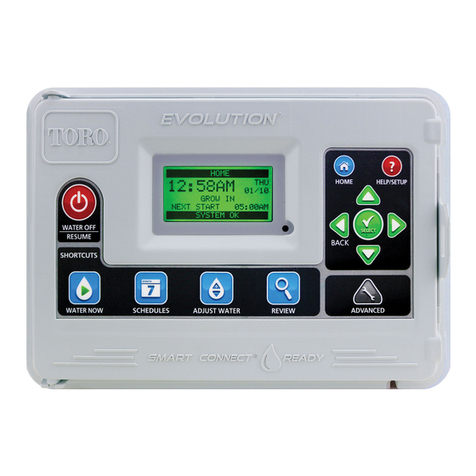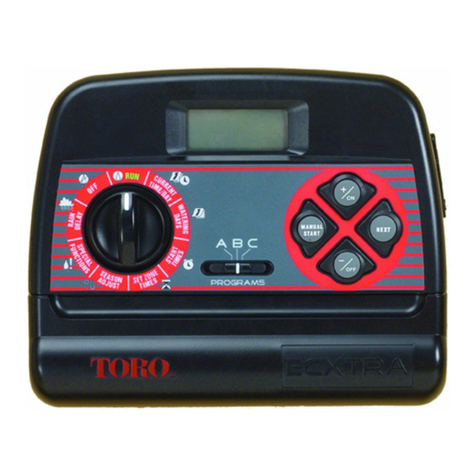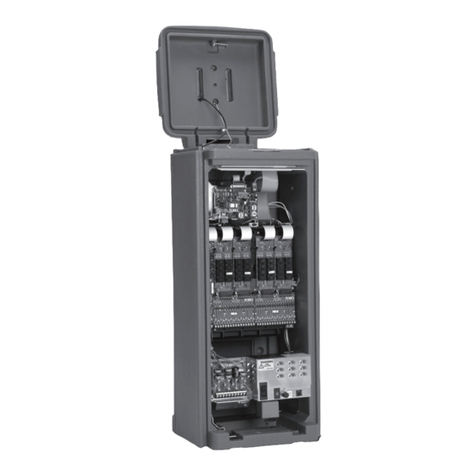Toro TBC WP Instruction Manual
Other Toro Controllers manuals
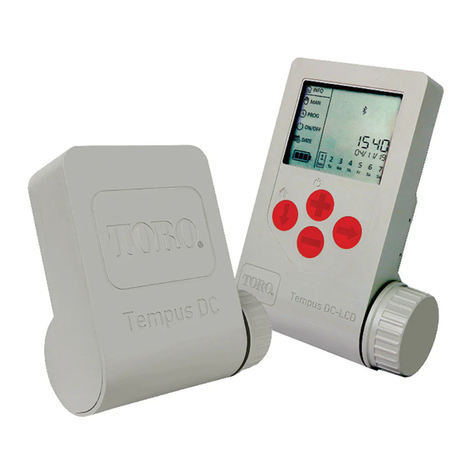
Toro
Toro TEMPUS DC LCD User manual
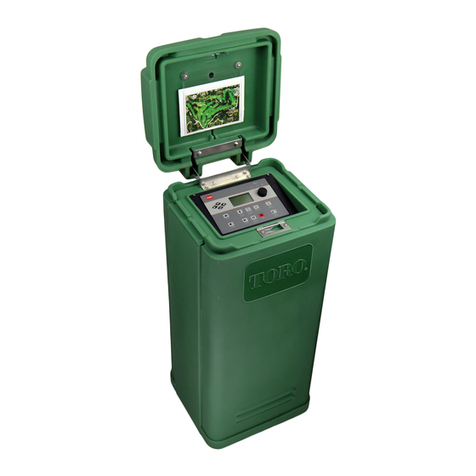
Toro
Toro Network LTC Plus User manual
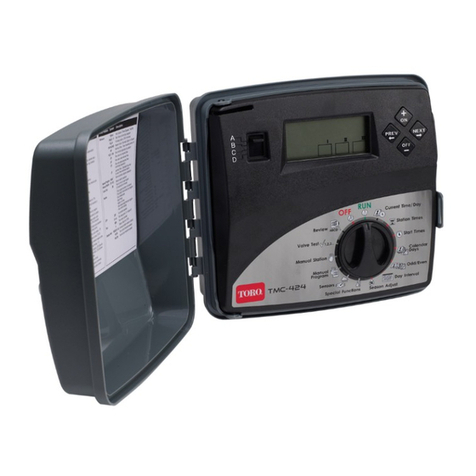
Toro
Toro NO FOUND TMC-424E User manual
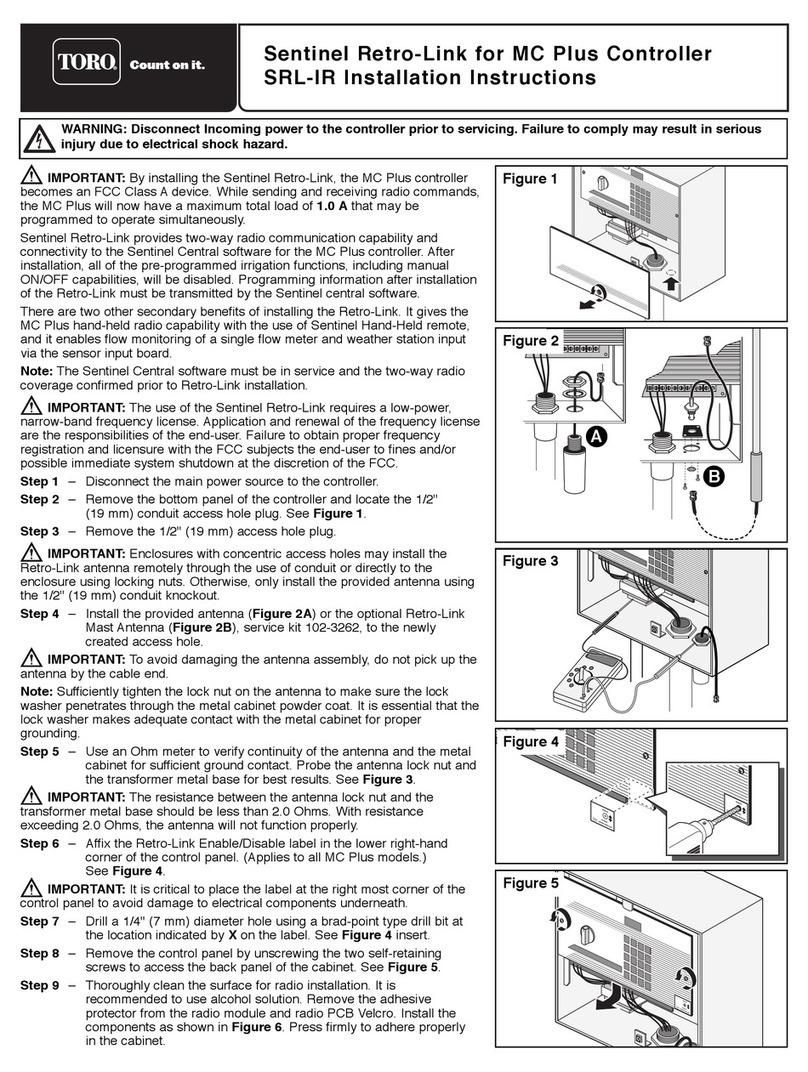
Toro
Toro SRL-IR User manual

Toro
Toro TEMPUS-AG-MV User manual
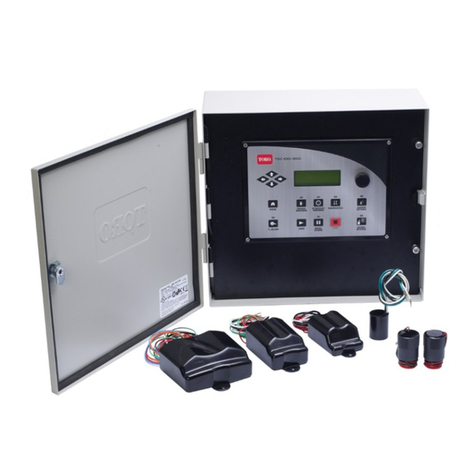
Toro
Toro TDC+ User guide
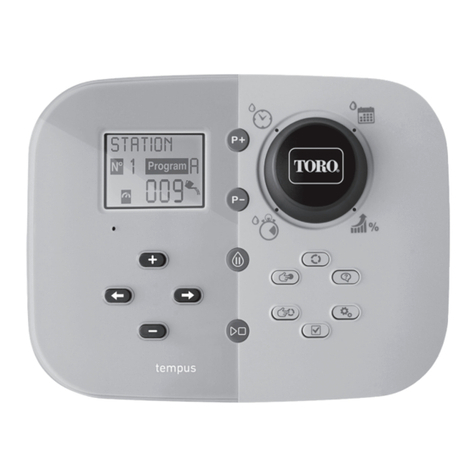
Toro
Toro TEMPUS 53828 User manual
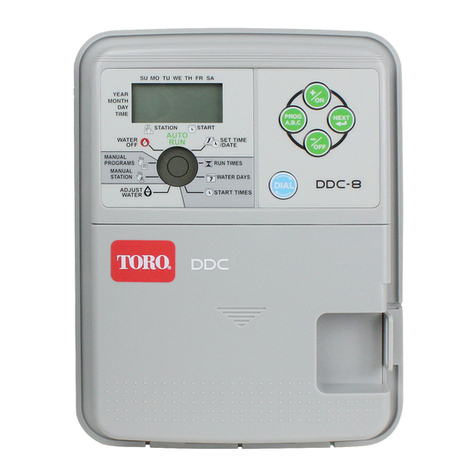
Toro
Toro DDC Series User manual
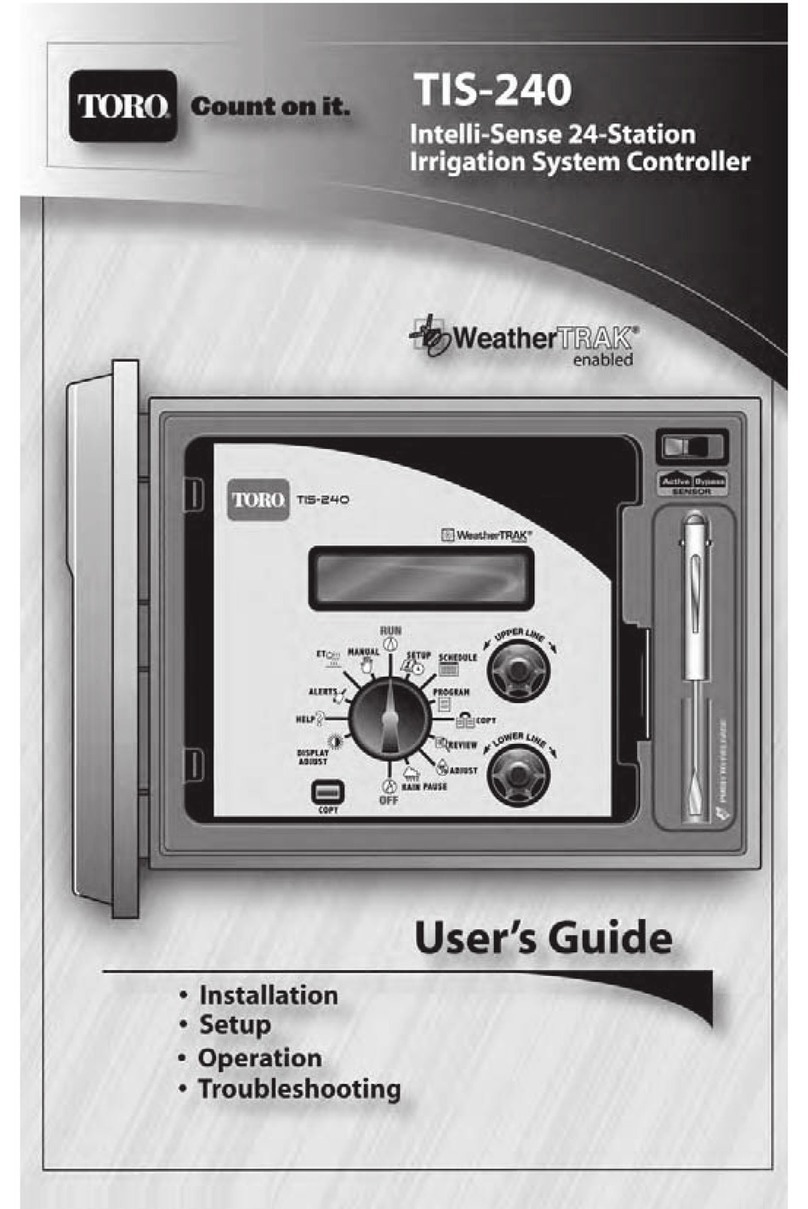
Toro
Toro TIS-240 User manual
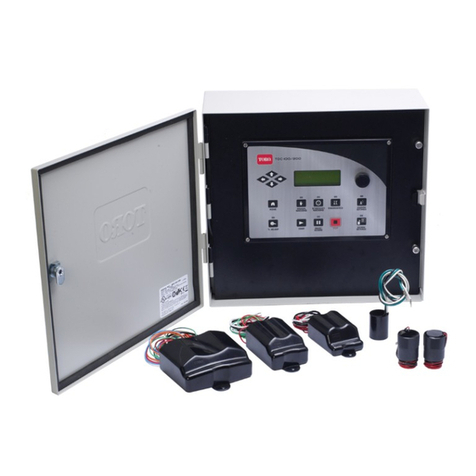
Toro
Toro TDC-100/200 User manual
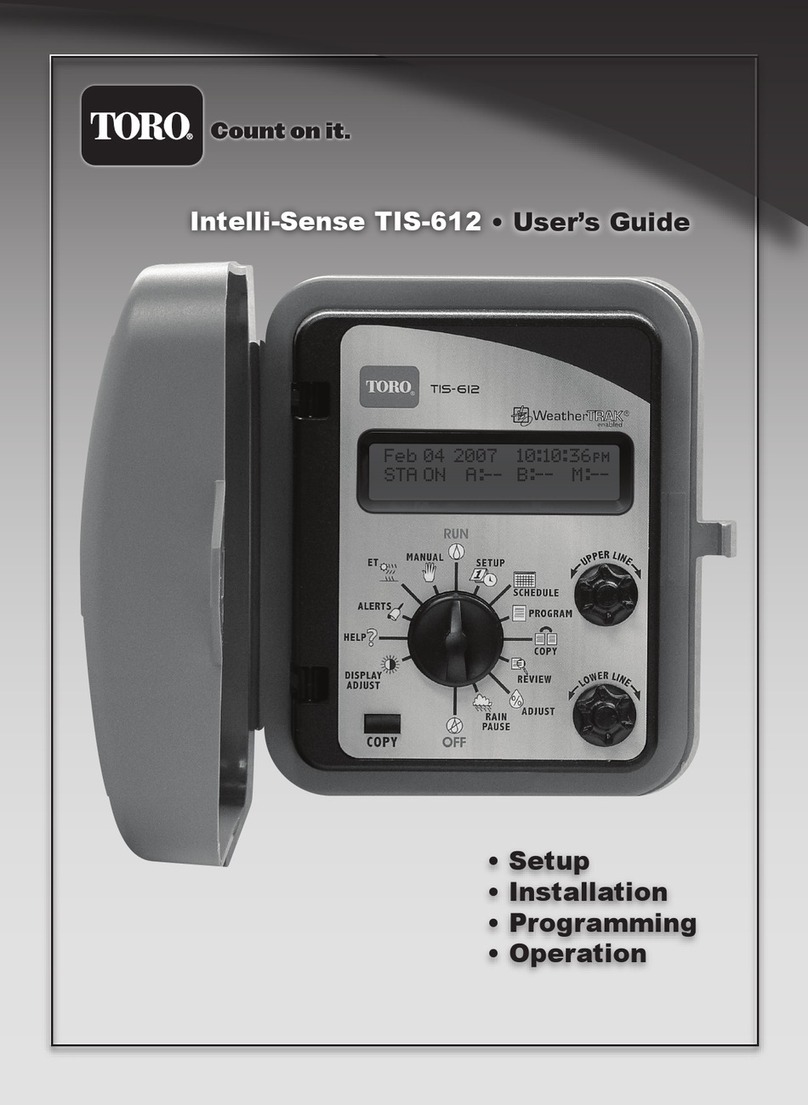
Toro
Toro Intelli-Sense TIS-612 User manual
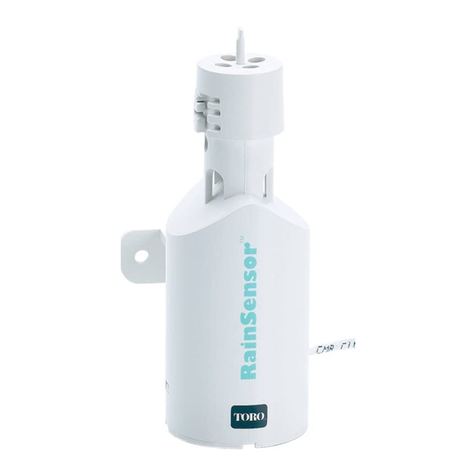
Toro
Toro Wireless RainSensor 53770 User manual
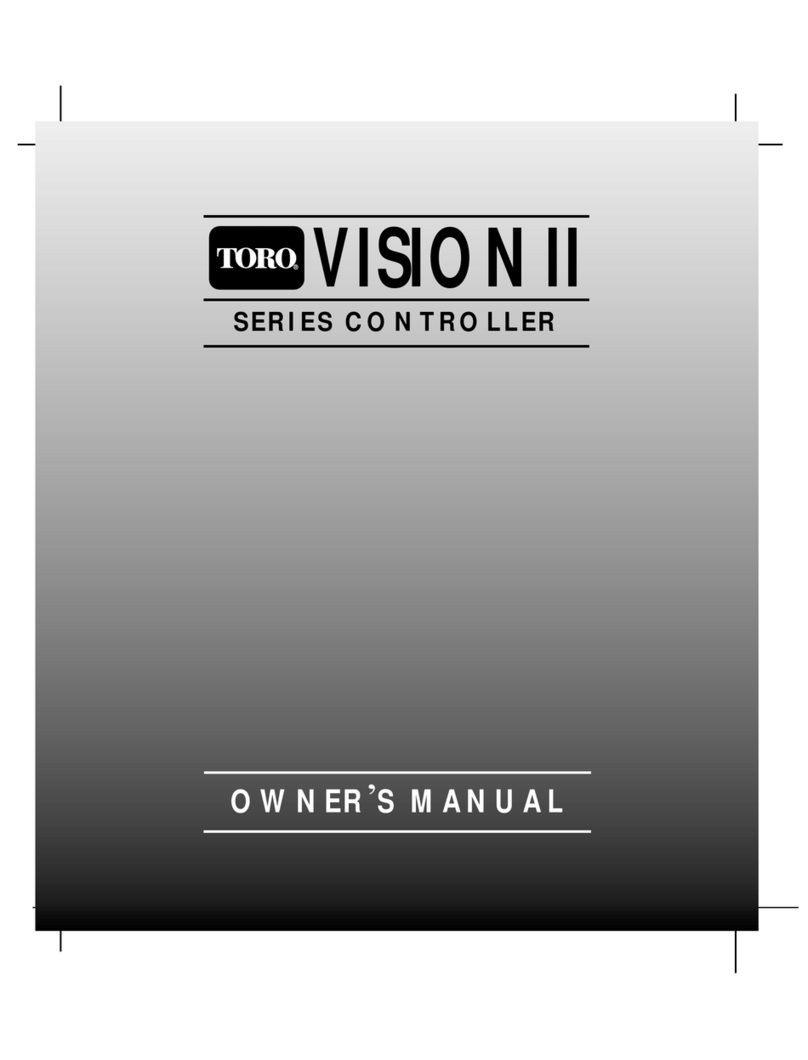
Toro
Toro VISION II Series User manual
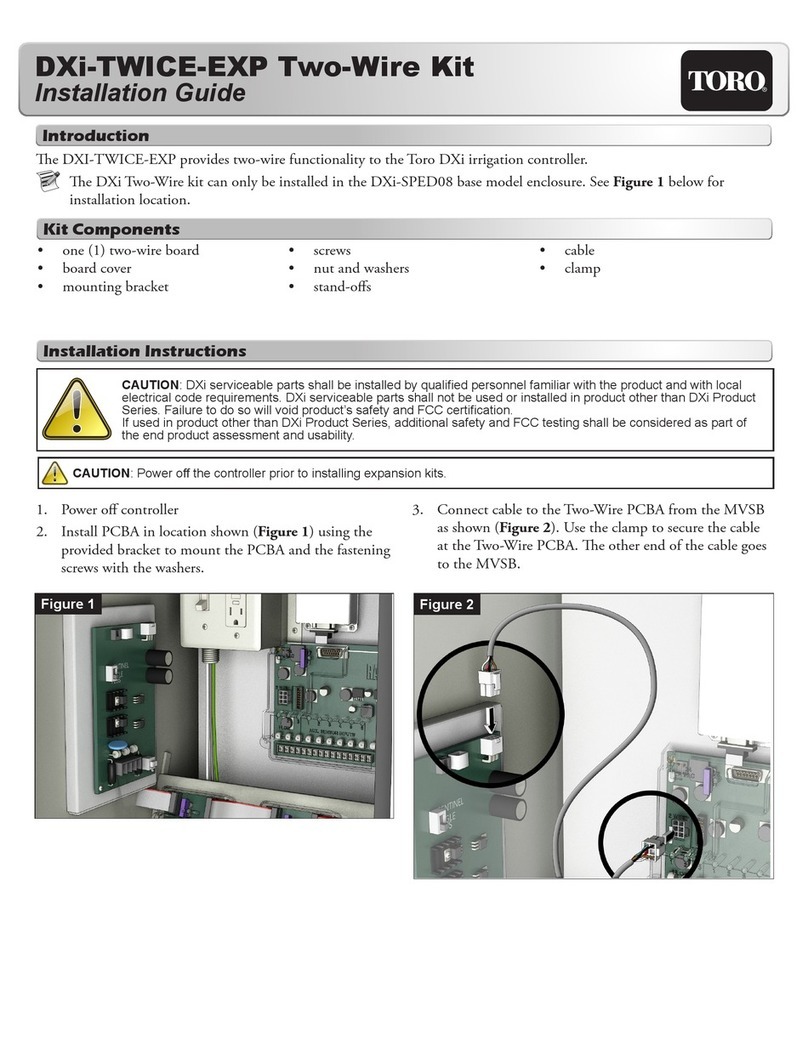
Toro
Toro DXi-TWICE-EXP User manual
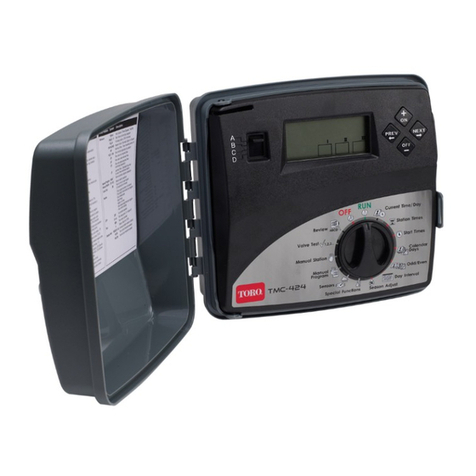
Toro
Toro TMC-424 Series User manual

Toro
Toro EVOLUTION Series User manual
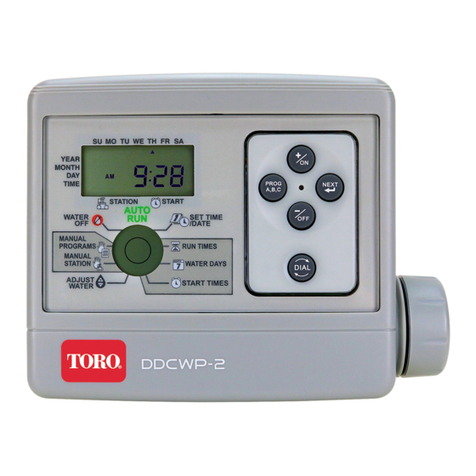
Toro
Toro DDCWP Series User manual
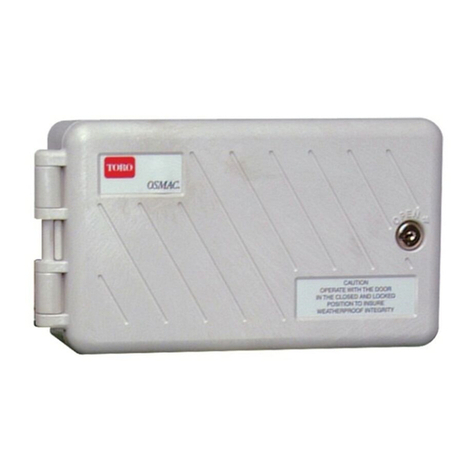
Toro
Toro OSMAC RDR Satellite Controller User manual
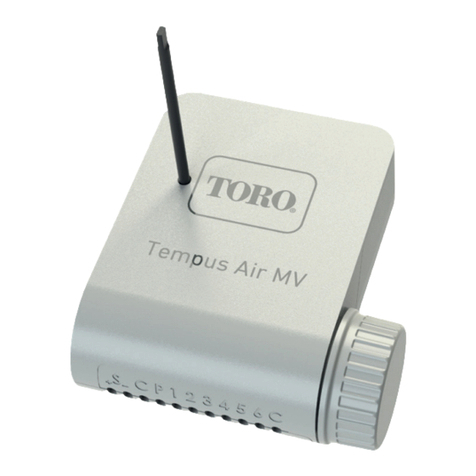
Toro
Toro LoRa Tempus Air MV User manual
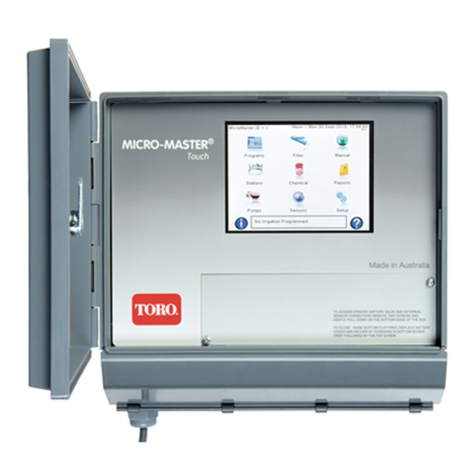
Toro
Toro Micro-Master Series User manual

